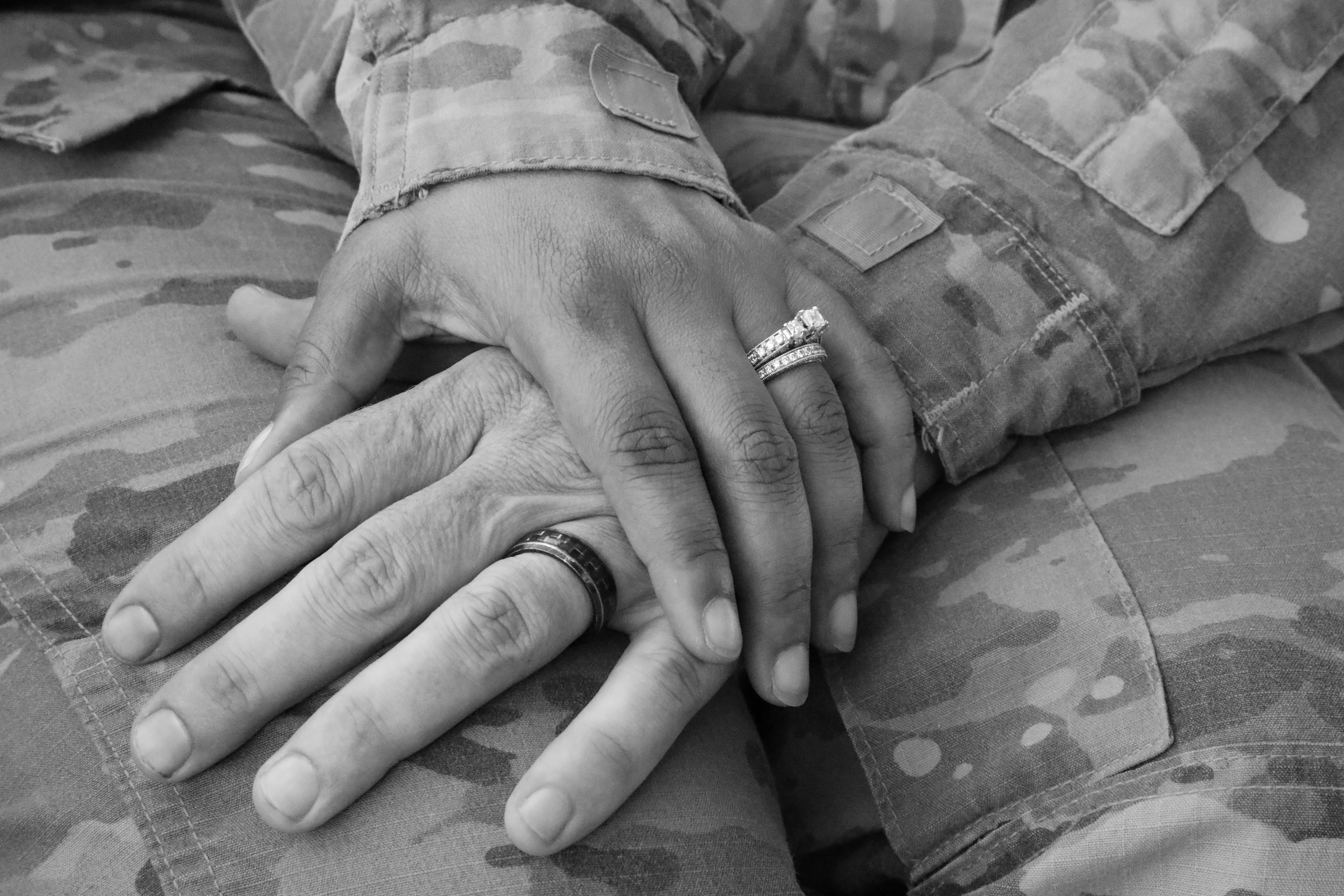If you get orders to Camp Lejeune, North Carolina, but your spouse has orders to Hawaii, there’s good news: the Marines’ new dual-military monitor may be able to help.
The new post, expected to be operational before summer, will exist to make it easier for the more than 4,300 enlisted Marines married to another active-duty service member to meet career goals and manage permanent change of station moves in a mutually beneficial way, according to Maj. Christopher Dippel, deputy section chief for the Corps’ enlisted assignments branch. The move is part of a broader effort by the Marine Corps to be responsive to the needs of dual-military couples, signaling that they are not just an afterthought or on their own while navigating a complex and decentralized bureaucracy.
Marine leaders also hope the new role will support retention at a well-known pain point.
“PCS is a large driver for potential departure from the service,” he told a panel at the March quarterly meeting of the Defense Advisory Committee on Women in the Services.
RELATED

It’s a bigger deal for the Marine Corps than for the other services. Nearly 60% of married female Marines are in a dual-military marriage, compared to a Defense Department-wide average of 45.3%, according to Dippel’s presentation.
A 2021 survey of active-duty service members with a military spouse showed that 88% of Marines lived with their spouse while not deployed, the lowest of any service except for the Army at 86%, according to data from the Pentagon’s Office of Personnel Analytics. The Marine Corps also had the highest proportion of respondents, 14%, who said they lived in a separate home from their spouse, double the Defense Department average of 7%.
Policies and protocols related to co-locating military couples are “critical for personal and professional longevity,” Dippel’s presentation stated.
According to Manpower and Reserve Affairs spokeswoman Capt. Sarah Eason, the dual-military monitor is a staff sergeant who is now in training to execute the first-of-its-kind role.
Once officially on the job, the monitor will help dual-military Marine couples report their marriages to administrative centers, submit co-location requests and navigate separation waivers, Eason said. The monitor can also offer career options to couples looking to co-locate, advise on timelines and educate Marines on programs that can help them, she said.
Without a dedicated monitor, Marines in dual-military marriages have had to navigate the Corps’ decentralized system of 75 different assignment monitors and manage the liaising and communication around aligning two different career tracks, Dippel said. The new monitor role will take on much of the responsibility of managing communication, both across units within the Marine Corps, and, in the case of couples with a spouse in another military branch, across service lines as well.
“We envision that [such Marines] will have liaisons within our sister service’s monitor and detailer networks,” Dippel said. And with all the planners in communication, “we can target and find the right billet for both of those service members at the right time.”
This move to better meet the needs of dual-military couples is part of a larger shift within Manpower and Reserve Affairs, according to Dippel’s presentation.
A system modernization effort underway, he said, will reframe the way orders for dual-military couples are processed, making it more akin to the system in place for troops in the exceptional family member program. Under that program, serving military families with special-needs members, the orders process includes a review to ensure the post receiving the service member has access to the medical or educational services the family requires.
“We envision that building this into our next systems architecture will ensure that any time a set of orders for a dual active-service couple is written, that will automatically get sent directly to the dual active-service monitor,” Dippel said. “That gives that monitor the opportunity to ensure that policies are being met, and that the needs of both of those service members are being met with that set of PCS orders.”
This is not always easily done, particularly with more senior couples for whom the available billets for a new assignment might be limited. Dippel said the Corps will work with couples to meet co-location needs while also ensuring the needs of the service are met. He said one solution in more complex situations could be an exception to policy that allows for a tour shorter than the standard 36 months, for example, to keep the couple together as much as possible.
“The Marine Corps firmly does believe that geographic stability does encourage retention,’” he said.
Later in 2024, Dippel said, the Marine Corps plans to publicize the changes in a “strategic narrative” video messaging campaign so that both dual-military Marine couples and their leaders understand how the system is supposed to work.
Across the Defense Department, retention of military talent has increasingly been a focal point for the services, particularly in light of historic recruiting challenges. Efforts like the recent bipartisan Quality of Life panel and accompanying congressional hearing emphasized the connection between living conditions and military career satisfaction.
The Marine Corps is not the first to try to ease the way for dual-military couples: the Married Army Couples Program allows dual families to establish a recognized “joint domicile” to support co-location.
Air Force and Navy leaders have said they work to give dual military couples special basing consideration, although without a dedicated liaison for the purpose.
Hope Hodge Seck is an award-winning investigative and enterprise reporter covering the U.S. military and national defense. The former managing editor of Military.com, her work has also appeared in the Washington Post, Politico Magazine, USA Today and Popular Mechanics.




